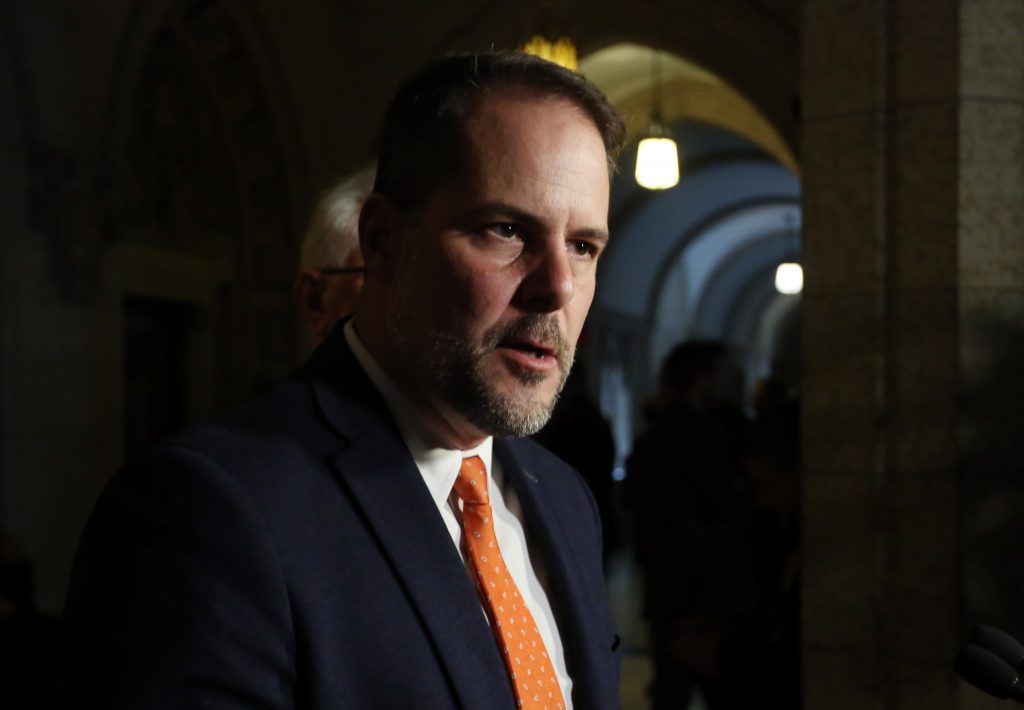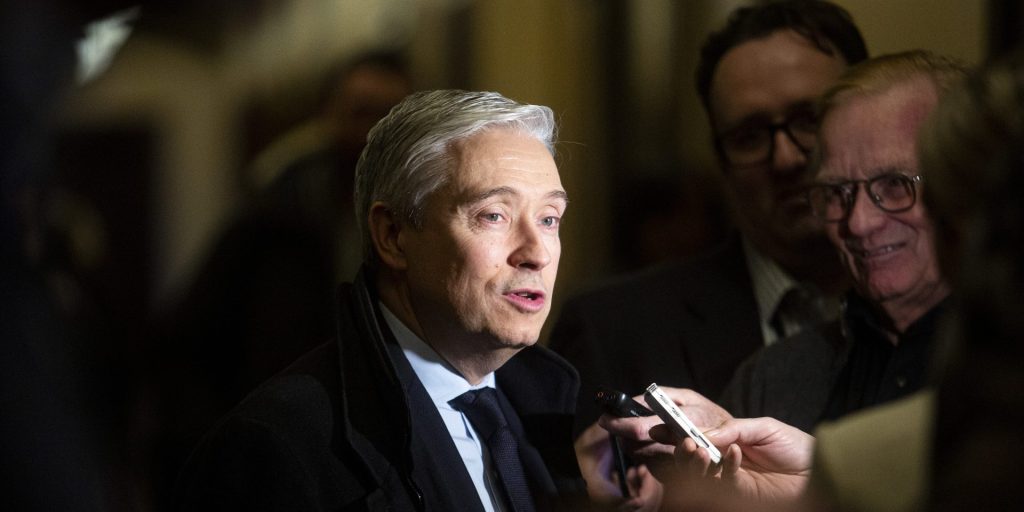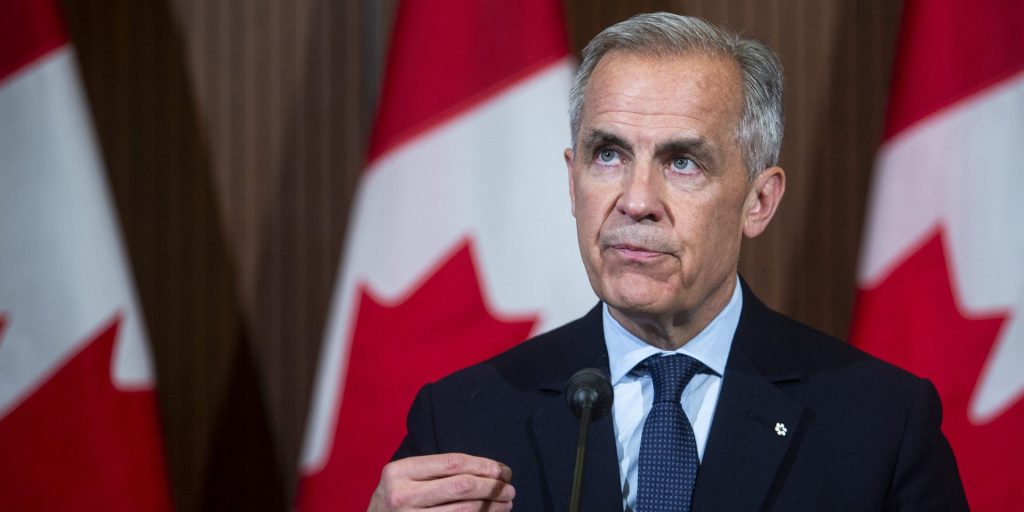Uncertainty over ‘sunsetting’ programs as Environment Canada’s spending slashed in half by 2028, pending fall budget update

Environment Canada’s three-year plan presents a $1.6-billion spending cut with the future of several programs under review, representing losses the NDP’s environment critic warns would be “catastrophic.”
Environment and Climate Change Canada’s (ECCC) 2025-26 departmental plan reveals its planned expenses are down by nearly 50 per cent in 2027-28 to $1.54-billion from the $3.13-billion allocated in 2025-26.
The largest cuts are projected to come as of 2026-27, dropping to $1.83-billion, around 42 per cent lower than this fiscal year’s planned spending. The last time ECCC reported spending at this level was six years ago in 2019-20, but the costs have been ticking upwards since the 2021 budget.
It is also expected to cut staffing numbers, with planned full-time equivalents falling by 10 per cent in 2027-28 from the levels in 2025-26—even as the spending decreases by 50 per cent.
NDP MP Alexandre Boulerice (Rosemont–La Petite-Patrie , Que.), his party’s environment critic, called the figures “shocking” and “catastrophic.”
Even with a fall budget coming, he said there is “no guarantee” the government will approve more cash for the department in the future and if it will be adequate.
The government has attributed these trends largely to initiatives that are “sunsetting” in the next two years. These programs had their funding approved for a certain period, like the Enhanced Nature Legacy Program and the International Climate Finance fund.
ECCC, like other departments, is currently undergoing a budget exercise. Simon Donner, co-chair of the Net-Zero Advisory Board, highlighted in an email that the plan’s numbers are not a complete picture just yet.
Last year’s plan, for example, set planned spending at $2.8-billion, but the department ended up spending closer to $3.2-billion, nearly the same amount set out for this year.
Prime Minister Mark Carney’s (Nepean, Ont.) election platform has proposals to create a “Canadian Nature Protection Fund”, among other things, which could mean new programs may be in the pipeline for the department.
Boulerice said the numbers suggest “the Liberals don’t even want to try to pretend that they are concerned about climate change.
“I’m personally, as an MP but also as a citizen, really, really worried about those cuts,” he said.

Keith Brooks, the program director for Environmental Defence, echoed this view.
“We were hopeful that the prime minister was going to be clear to premiers and to Canadians that we’re not stopping the fight on climate change. But he has not been clear about that so far, and it’s very concerning,” he said.
Carney announced a significant increase in defence spending in June, adding $8.3-billion to this year’s budget to meet NATO’s two per cent of GDP funding target.
Finance Minister François-Philippe Champagne (Saint-Maurice-Champlain, Que.) has instructed his ministers to find 15 per cent in savings by 2028-29 to make space for cuts.

Boulerice slammed the government for attempting to fund the defence bill by lowering the cash for other departments, and ECCC in particular, amid an increasing number of climate-related catastrophes and wildfires in Canada.
In addition to the cuts, Bourlerice referred to Bill C-5 which was passed in a rush this spring and overrides several environmental regulations, including the Species at Risk Act.
Future of some climate action in question
Several policies highlighted in last year’s plan from former environment minister Steven Guilbeault’s (Laurier–Sainte-Marie, Que.) are either omitted or not clearly specified in this year’s document.
The federal emissions cap for the oil and gas industry, announced last November, is one example. The policy has been frequently targeted by Alberta Premier Danielle Smith who has called for the caps to be removed.
There is also no mention of making climate disclosures mandatory for private companies, which last had an update in October 2024. The regulations aimed at reducing landfill methane emissions by 50 per cent by 2030 were proposed in 2024, but there is no clarity on when they will come into effect, and the 2025-26 departmental plan does not clarify a timeline.

“The omission about the climate disclosure is surprising. … Certainly in the past Prime Minister Carney has spoken about the importance of disclosures,” Brooks said.
“In fact, you know, he is one of the people who started the Task-Force on Climate-Related Financial Disclosures.”
There are already calls for the government to roll back its mandate for electric vehicles by automakers, and the plan does not indicate a clear commitment to it either.
“They want to rush projects of national interest,” argued Boulerice, “but I see somebody [in Carney] who is on the side of industries and big companies, and not on the side of working people or even the health and safety of the population in general.”
On the emissions cap being in a commitment limbo, he was of the view that the Liberals were “never serious about it.”
“I think it was always something that they tried to postpone… kicking the ball at the other end of the field… to be sure that they don’t have to really do it,” he said.
Budget should reveal which programs get axed, trimmed, or remain
The programs facing cuts are subject to a review ahead of the fall budget. The Enhanced Nature Legacy Program (ENLP), allocated $2.3-billion over five years starting in 2021-22 to ECCC, Parks Canada, and the Department of Fisheries and Oceans, is among these.
Andrew Van Iterson of the Green Budget Coalition said while it is very unlikely the government will cut ECCC’s budget in half as shown in the plan, he is “worried” about programs like ENLP that are sunsetting.
The coalition is a collective of 20 environmental and conservation groups that make recommendations to the government on allocating cash in the budget.
The numbers in the plan, he said, are preliminary, and he is hoping that the government will see value in supporting the initiatives at the edge of their expiry.

The ENLP, in particular, is a program which Van Iterson said has “nothing comparable” to it in scale. It encompasses a lot of different pieces of programs protecting Canada’s national parks and biodiversity.
“It’s been a risk with Canada’s environmental funding for quite a while, but a lot of it is B-based funding, and so it needs to be renewed regularly,” he said. “With ENLP you couldn’t cancel it and assume something else would take up the slack.”
Another notable reason for a reduction is a “significant drop” in the Output-Based Pricing System (OBPS) Proceeds Fund returns. It is the fund that receives amounts from the carbon tax for heavy industry, which is paid back to the jurisdictions of origin where the federal model applies or was applied in the past.
Currently, the model is in force in Manitoba, Prince Edward Island, Nunavut, and Yukon. The other provinces and territories have designed their own systems that comply with the minimum standards for the industrial carbon tax set by the feds.
There is no clear explanation as to why there would be such a drop in the fund returns in the departmental plan. The Hill Times reached out to ECCC and Minister Julie Dabrusin’s (Toronto—Danforth, Ont. ) office for clarity, but did not hear back.
A climate expert from another well-known environmental organization spoke to The Hill Times on background about this. They were of the view the reduction could be owing to the fact that the government collected industrial carbon tax from provinces that did not opt for the federal backstop but it still applied to the region, and these funds were lying in the federal kitty waiting to be returned.
By 2027-28, the government may have plans to give back these leftover proceeds to these provinces so there may not be much else due to be paid.
A fund that is linked to the proceeds of OBPS, the Low Carbon Economy Fund, is also slated to see a cut in its contributions as per the departmental plan.
Conservatives and oil CEOs want the industrial carbon tax gone in the same fashion the fuel charge was reversed. However, Carney’s Canada Strong election platform has pledged to improve the OBPS, and work with provinces and territories “to ensure carbon markets continue to function well.”
Climate funds to other nations could face cuts
Canada’s International Climate Finance Program meant for developing countries to tackle climate change is also on the line, with the program marked as sunsetting.
This year’s Global Affairs Canada departmental plan states that $645-million for Canada’s international climate finance and biodiversity programs will end in March 2026, and so will $240-million for the Climate Change Fund for developing countries. There is $186-million set aside for the ongoing implementation of Canada’s 2021 to 2026 international climate finance commitment will end by March 31, 2026, too.
The Liberal campaign platform reiterated plans to back the international climate finance program but said the focus would be on “bringing in more private capital.”

There is currently nothing to suggest that the program would see a cut in the fall budget, but the prospect—as suggested by the departmental plan—has caused some alarm.
“We are one of the largest emitters globally… we have a lot of responsibility here for the [climate] crisis that we’re in,” Brooks said on the subject.
NDP MP Boulerice questioned why Canada would shrink away from its duty to developing countries.
“We have natural catastrophes, fires, and flooding everywhere in the world… why should we stop helping other countries to reduce their greenhouse gas emissions? I don’t get it,” he said.
The Green Budget Coalition has called for $20-billion towards the international climate finance program over 2026-31, and an ongoing funding of $1-billion per year towards International Biodiversity Finance in their budget recommendations for 2025 and 2026.
Ahead of the ECCC’s fall budget, Brooks urged the Carney government to reveal a clear plan on how it intends to bring down Canada’s greenhouse gas emissions and tackle climate change.
“We would like to see the government signal that they do not intend to weaken existing climate policies, including the zero emissions vehicle availability standard, including clean electricity regulations,” he said. “Because a number of provinces, including Ontario, are making plans to build new gas plants and those that would be going against those regulations.”
rkachhela@hilltimes.com
The Hill Times






 LICENSING
LICENSING PODCAST
PODCAST ALERTS
ALERTS













